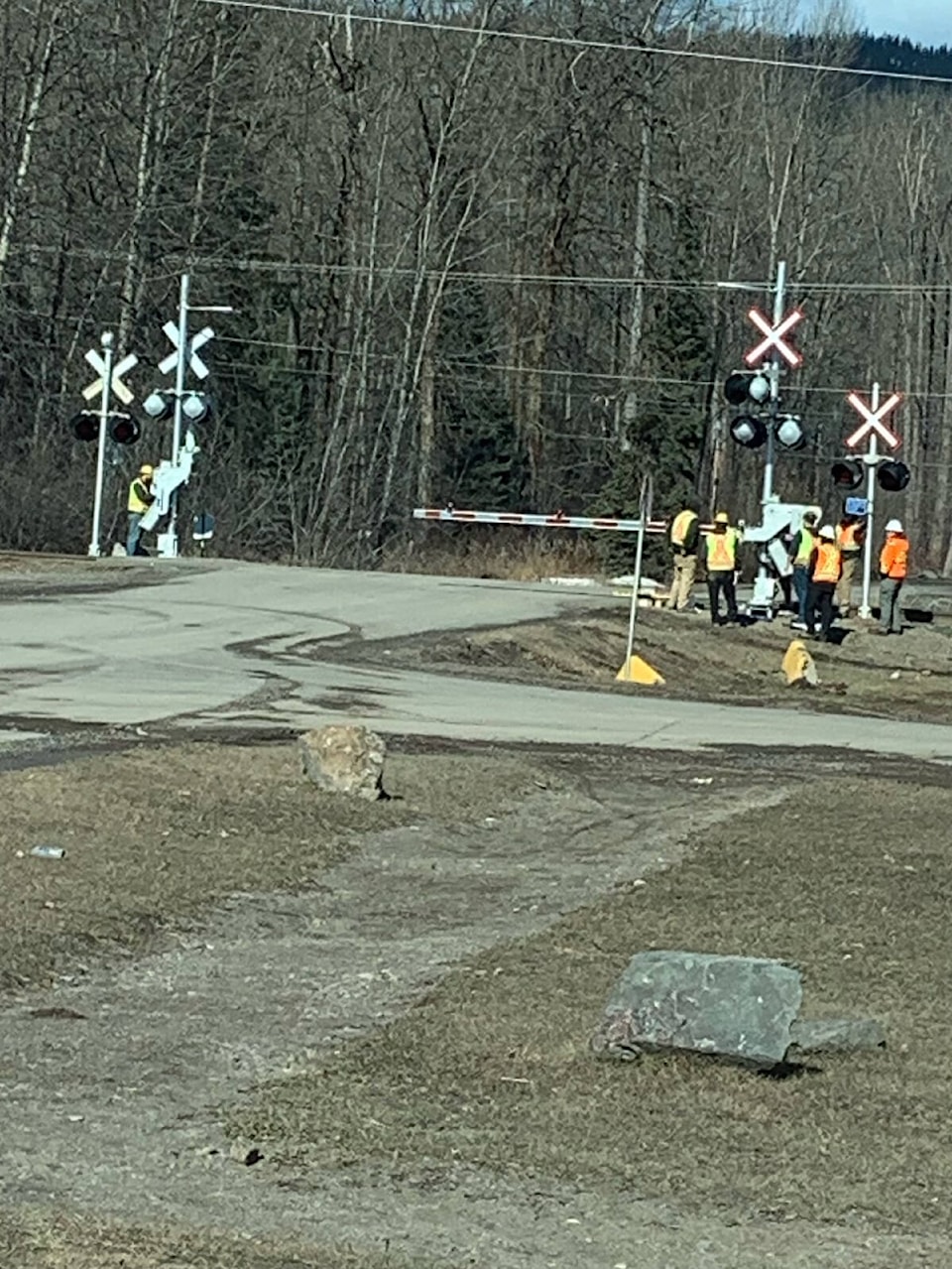The District of Houston is preparing to cross off one item from its ‘to do’ list.
And that is the installation of better lights, crossing barrier arms and other safety-focused improvements where CN’s main line crosses Benson Ave.
CN crews were busy last week assembling and installing the improvements.
The work fits in with a District of Houston goal to have CN’s trains stop using their whistles as they roll through the community, something that has been drawing noise pollution complaints for years.
But that would require safety improvements at level crossings, the District of Houston discovered when it commissioned a 2019 study on how to stop whistle blowing.
At the same time, changes as of last year to rail crossing regulations required updated safety measures, leading the District of Houston to successfully apply for a Transport Canada grant for the work, explained District of Houston corporate services officer Holly Brown.
The grant received will cover 80 per cent of the cost of the work which CN has told the District amounts to $520,717, said Brown. That’s an increase over the first estimated price tag of approximately $480,000.
With the crossing improvements now in hand, Brown said the District can focus on additional recommendations contained in the 2019 assessment that will help in its quest to stop CN whistles from blowing.
“At this time, we do not have updated cost estimates for phase two of the project (installing a fence along the rail line), but it is likely that once this current project is completed we will be looking for funding for the next steps in the project,” she said.
The 2019 assessment noted that people crossing tracks on foot come from the residential development to the north of the crossing and while a fence exists along the south edge of the tracks, there is no fence for the north side of the track.
“Moreover, the south side fence will require extension to prohibit and discourage trespassing,” the study continued.
Improved measures to outline where the heritage church parking lot is from the roadway leading to the crossing are also called for with the study noting that although crossing lights are “visible, the church parking lot is not marked or an entrance/exit delineated, thereby making it difficult to assume where drivers may enter or exit the space.”
